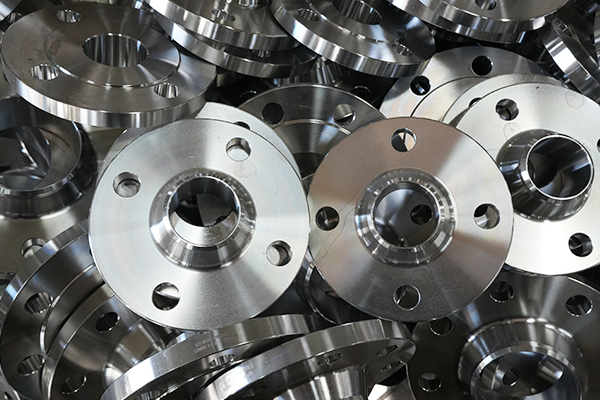NewsDetails
Weldability Differences of Flanges Made from Different Materials
author:Zhantong time:2025-05-23 01:44:33 Click:186
Weldability Differences of Flanges Made from Different Materials
1. Carbon Steel Flanges
Weldability: Generally excellent due to uniform composition and moderate carbon content.
Considerations: Preheating may be required for thicker sections or higher carbon equivalent to avoid cracking.
Common Issues: Risk of hydrogen-induced cracking if moisture or contaminants are present.
2. Stainless Steel Flanges
Weldability: Good weldability, but requires control of heat input to avoid sensitization and intergranular corrosion.
Considerations: Use appropriate filler materials matching the alloy grade.
Common Issues: Thermal distortion due to lower thermal conductivity; risk of carbide precipitation if improperly cooled.
3. Alloy Steel Flanges
Weldability: Moderate; often requires preheating, controlled interpass temperatures, and post-weld heat treatment (PWHT) to relieve stresses.
Considerations: Filler metals must match alloy composition to maintain mechanical properties.
Common Issues: Susceptible to cracking if weld parameters are not strictly controlled.
4. Duplex and Super Duplex Stainless Steel Flanges
Weldability: More challenging due to dual-phase microstructure; requires precise heat input control to maintain phase balance.
Considerations: Use specialized filler metals and welding procedures to avoid phase imbalance and stress corrosion cracking.
Common Issues: Risk of ferrite or austenite phase imbalance, leading to reduced corrosion resistance.
5. Copper and Copper Alloy Flanges
Weldability: Generally poor to moderate; copper’s high thermal conductivity causes rapid heat dissipation, making weld pool control difficult.
Considerations: Requires high heat input and specialized techniques such as TIG welding.
Common Issues: Porosity and cracking due to thermal stresses.
6. Nickel Alloy Flanges
Weldability: Good but requires careful control of welding parameters to prevent hot cracking.
Considerations: Use compatible filler metals and avoid rapid cooling.
Common Issues: Susceptible to segregation and weld metal cracking if improper techniques are used.
Summary
Weldability varies significantly depending on flange material. Carbon steels are generally easiest to weld, while duplex stainless steels and copper alloys present greater challenges requiring specialized procedures. Understanding material-specific welding requirements ensures strong, defect-free flange joints.
 Recommended Products
Recommended Products
 Contact us
Contact us
—— Contact:Manager
—— Tel:+86 15231788966
—— Email:info@zhantongpipe.com
—— Url:https://www.zhantongpipe.com
—— Address:Mengcun Hui Autonomous County, Cangzhou City, Hebei Province









